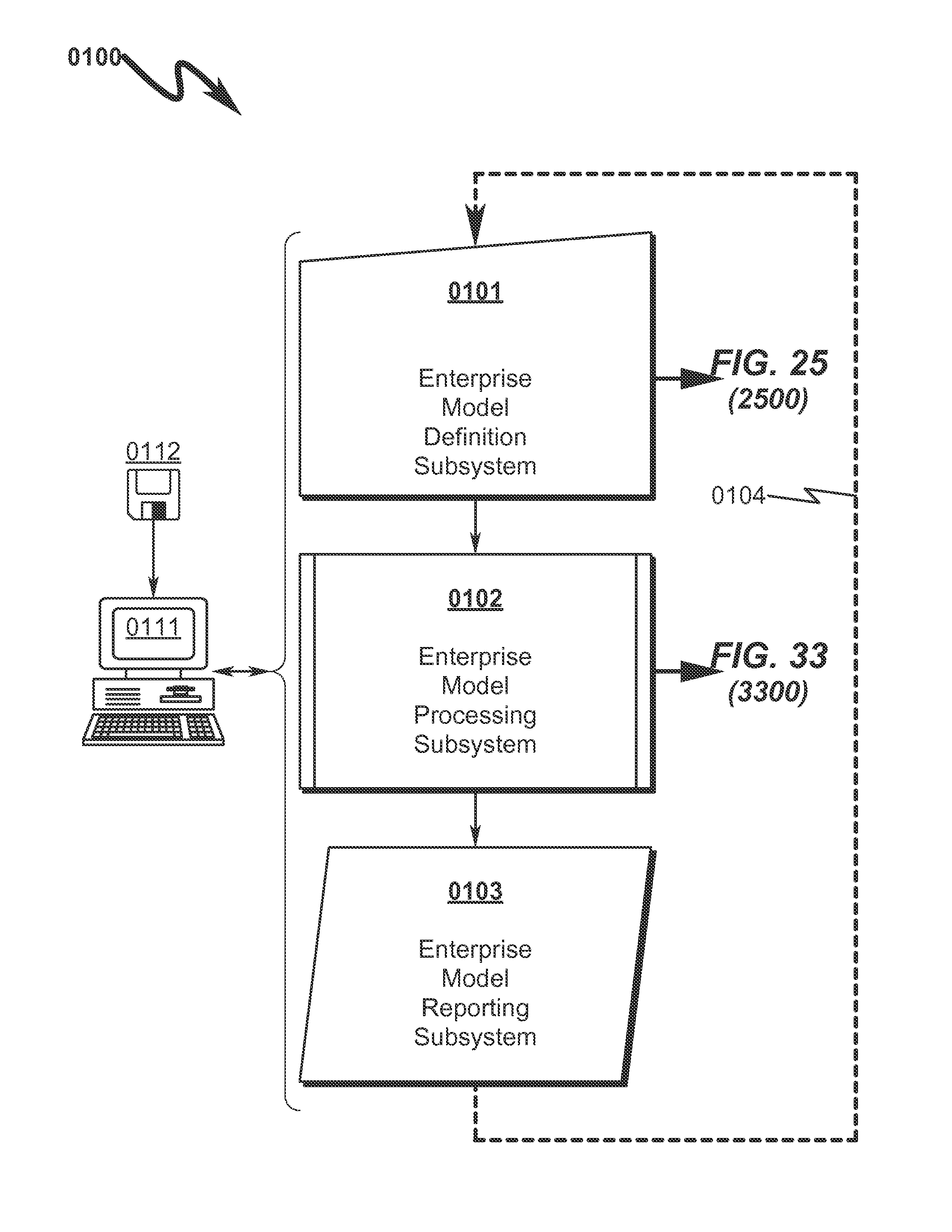A common issue regarding the operation of large enterprises is the difficulty in analyzing the systems / processes associated with the enterprise because of the following:The systems / processes generally have a large number of resources that must be properly managed to optimize overall enterprise performance;The
system / process resources incorporate constraints that limit the flexibility of operation to a finite (but often very large) set of possibilities that are generally not computationally tractable (or in some cases even understandable) by application of raw human effort;
System / process resources and / or constraints are often configured in an interconnected network in which constraints between and within the resources are related in a large number of dependencies that are often difficult to extract and transform into a mathematical representation that correctly expresses the interacting constraints among the various system / process components;The methods currently used to transform the representation of the enterprise system / process into a mathematical representation are known to be computationally intractable for many types of constraint relationships that commonly exist in real-world enterprise systems / processes.
Real-world enterprise systems / processes include numerous forms of constraint relationships that are context-sensitive;The mathematical representations required for enterprise system /
process optimization are difficult and counter-intuitive to formulate properly.
Conventional digital computers, and the optimization solvers that run on them, provide no support for such mathematical expressions and are limited to mathematical expressions involving strictly linear terms (i.e., “+”, “−”, and “*”).
The mathematical expression of such constraints is counter-intuitive and computationally difficult;Solutions to resulting equation matrices formulated from various resources and their related constraints may be computationally intractable due to the large number of variables and parameters that must be evaluated to achieve an optimal global enterprise solution;Use of conventional contribution margin / marginal value goal-seeking objectives in traditional enterprise optimization systems may fail in many cases to properly achieve a globally optimal enterprise solution;
Numerous problem simplification methods are in use but all of them share a common characteristic—the analytical results they produce are incorrect in the sense that they do not identify the decisions that will optimize the financial performance of the enterprise system / process.
In many instances, problem simplification methods produce analytical results that, while purporting to indicate decisions that will optimize financial performance, actually have consequences that are exactly opposite of the desired result.
This integration of
database view along with the large amount of data associated with enterprise optimization generally limits the scope or view from which an optimization of an enterprise may be attempted.
At a minimum, integration of the
analysis tools with the enterprise
information data storage makes reformulation of enterprise system / process models very difficult, as it generally requires restructuring of the information
database in order to achieve new analysis views on the data.
These two problems—problem oversimplification and solution inflexibility—are well-known in industry and are widely considered to be the primary obstacles to widespread adoption of effective solutions supporting enterprise system /
process modeling and optimization.
Many attempts have been made to address one or both problems but, to this point, these efforts have failed.
For example, efforts to “delink” the enterprise information
database from the optimization process have suffered in that attempts to linearly “chain” resources with inter-link constraints, while simplifying the creation of equation matrices for large order
matrix solution, have resulted in an oversimplification of the inter-
resource constraints that are a reality in any large enterprise system / process.
Simply stated, serial dependency constraints on resources within a large enterprise system / process are insufficient to fully describe the system / process because there are inter-resource dependencies that are not sequential, and possibly not even linear, or spatially / temporally static in nature.
Thus, while sequentially linked resources and their associated constraint vectors may make for relatively easy generation and evaluation of resulting equation matrices to achieve
solution state spaces, this approach suffers from the inherent deficiency that the serial chained-constraint model is structurally flawed and does not represent the real-world enterprise system / process environment.
However, it should be noted that incorporation of all inter-resource constraint vectors within the framework of existing enterprise system /
process analysis software has proven to be computationally intractable in that the large order of the matrices generated by the equation matrix generators in these systems prohibits the inter-
resource constraints from being implemented as it increases computational complexity as to the SQUARE order of the resulting equation matrix.
Generally speaking, the possible interactions between N resource objects is of order N!, and thus the difficulty lies not in solving the matrix of order N, but rather generating the matrix of order N with sufficient efficiency and speed while incorporating the multitude of inter-resource interactions that exist in real-world enterprise environments.
 Login to View More
Login to View More  Login to View More
Login to View More 


